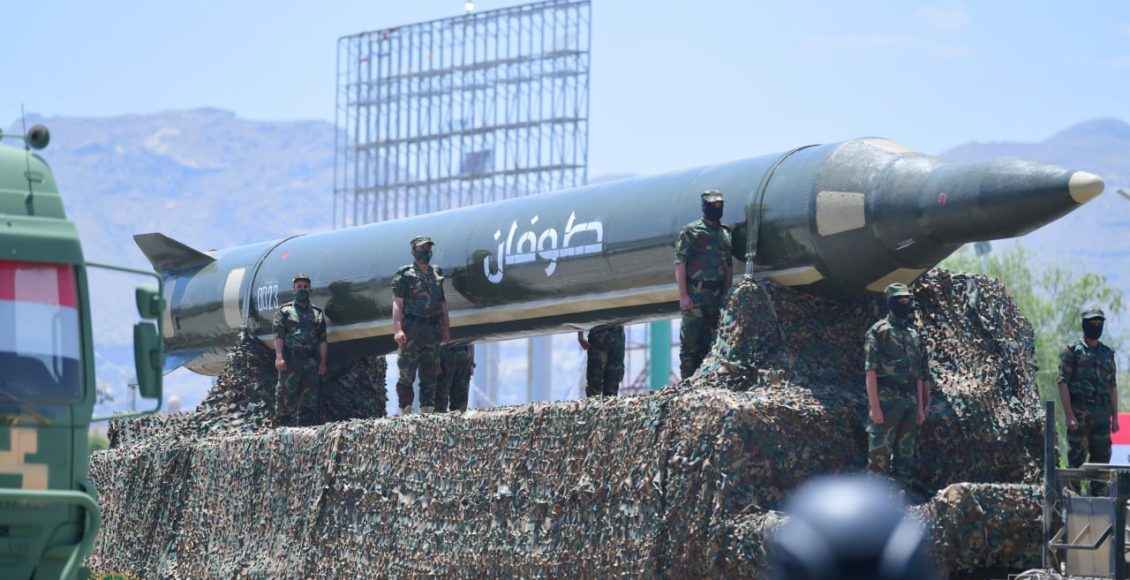A report published by a Canadian research institute has shed light on the Western crisis in the war against Yemen, led by the United States in the Red Sea. The report highlights how the low-cost weaponry produced by Yemeni forces poses a serious threat to Western warships and their missile defense systems.
The Canadian Institute for Global Affairs pointed out that the American-led coalition faces a dilemma in countering attacks from Yemen due to the high costs of the coalition’s naval defense systems. These systems are heavily used to counter a range of drones, cruise missiles, and inexpensive ballistic missiles. Despite their low cost, Yemeni weapon systems such as drones, remotely piloted boats, submarines, cruise missiles, and ballistic missiles pose a real threat to warships and their air defense capabilities, which the West has relied on since the Cold War era.
The Canadian Institute stated in its report that Canada’s current contribution within the American coalition in the Red Sea to counter Ansar Allah(Houthis) attacks includes staff officers and intelligence analysts. However, the escalating threat from Ansar Allah calls for Canada to increase its participation. With the Ansar Allah’s continued success in disrupting navigation, striking ships, and sinking them, as happened with the British ship Rubymar, Canada needs to learn from the lessons in the Red Sea, especially regarding Canadian naval air defense.
The Canadian Institute expressed concerns that China and Russia could benefit from the experience of the Yemeni navy in confronting the American coalition, which failed to restore maritime navigation in the Red Sea and cut off Yemeni supporting attacks for Palestine. The institute pointed out that the actions taken by Ansar Allah naval forces herald a strategic change in naval warfare. The most dangerous thing is that China and Russia, with their technical and technological advancement, could benefit from the Yemeni experience while Canada and the West continue to rely on traditional, high-cost naval weapons systems. This calls for the production of alternative defense systems that keep pace with the low-cost offensive systems used by Ansar Allah, such as defense systems based on directed energy or electromagnetism.
The Canadian Institute for Global Affairs confirmed that “so far, Ansar Allah have achieved great success in disrupting global trade (referring to the disruption of Israeli, American, and British navigation), as many commercial ships have chosen to take longer and more costly trips around the African Horn instead of risking travel through the Red Sea and the Suez Canal.”
The report also confirmed the ability of Yemeni drones to be one of the biggest threats to American naval air defenses, along with Yemeni medium and short-range ballistic missiles. The report states, “While medium and short-range ballistic missiles have received the most attention so far, the war in the Red Sea has clearly revealed that locally made, inexpensive drones pose another significant challenge to traditional naval air defense systems.”
The Canadian Institute revealed in its report that Western intervention against Yemen (to protect Israel) has only resulted in negative results for America and the reputation of its weapons, especially naval air defense. The report confirmed that the attacks launched by the Yemeni navy against American warships have created significant concerns about the capabilities of Western naval air defenses, indicating that they are seen as ineffective due to the Yemeni navy’s ability to deplete the defensive missile stockpile on Western warships if it wanted to do so with a wide attack in one go.
In a previous paragraph of the report, the Canadian Institute mentioned that “the 12 Canadian warships each carry 16 defensive missiles to counter hostile objects in the air, and an attack could occur on one of these ships, prompting the crew to use all 16 defensive missiles and leaving the warship without a defense system because rearming requires the warship to leave for any friendly port.”
The report said that the operations carried out by the American navy against the Yemeni navy led to the redirection of their missile strikes and drones to attack American naval forces, and the results of these confrontations began to raise concerns about the capabilities of naval air defense in Western countries, especially America.
The report adds that the low cost of Yemeni offensive weapons and the high cost of American and generally Western naval defense systems reveal the extent of concerns about the possibility of quickly depleting the stockpile of air defense missiles on board ships in any major future conflict. The shortage of stocks of Western naval defense missiles will lead to the cancellation of Western naval forces continuing their military tasks because they may become at any moment completely unable to protect themselves.







